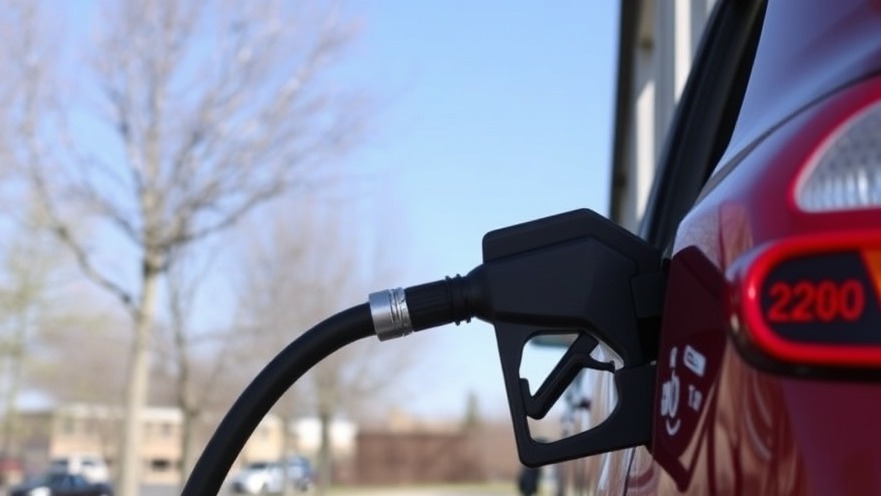
Gas Prices Surge: Understanding the Trends
In the first week of April 2025, gas prices across the United States have jumped by over 10 cents, hitting an average of $3.26 per gallon. This increase is notable, especially since it has not been seen since September of the previous year. Factors contributing to this rise include seasonal adjustments and ongoing refinery maintenance.
As spring unfolds, consumers are typically accustomed to seeing fluctuations due to the transition to summer-blend gasoline, which is often more expensive. According to AAA, while prices have risen, they are still significantly below the national average of $3.54 from last year, indicating that market conditions could stabilize in the upcoming weeks.
Why Is Maintenance Affecting Prices?
Ongoing refinery maintenance is a normal part of operations but can significantly affect supply. With steady demand, any disruption can lead to increased prices at the pump. Recent data from the EIA reported a slowdown in gasoline demand, dipping from 8.64 million barrels per day to 8.49 million due to seasonal factors and possibly consumer hesitance amidst economic uncertainty. Yet, gasoline production remains robust, averaging 9.3 million barrels per day, which suggests that while demand is weakening, supply is managing to stay relatively stable.
Regional Price Variations: Where Homeowners Feel the Pinch
Regionally, gas prices vary widely across states. California faces the highest expenses at $4.91 per gallon, closely followed by Hawaii and Washington. Conversely, states like Mississippi and Tennessee enjoy more affordable rates, averaging $2.74 and $2.80, respectively. For homeowners, particularly those owning pressure washing and exterior cleaning businesses, understanding these variances in fuel prices is crucial, as it directly affects operational costs and profit margins.
The Broader Impact of Fuel Costs on Businesses
For pressure washing companies, increased gas prices could mean higher operational costs, affecting pricing strategies and overall profitability. When considering the best way to market pressure washing businesses, it’s essential to account for these fluctuating costs. Companies may need to adjust their marketing materials to reflect potential price hikes, position their services as cost-effective, or emphasize energy-efficient practices that might mitigate these costs, appealing to environmentally conscious consumers.
Electric Vehicle Charging Costs: An Alternative to Gasoline
Interestingly, while gasoline prices rise, the cost of charging electric vehicles has held steady at an average of 34 cents per kilowatt hour nationwide. As more people consider switching to electric vehicles, businesses should be prepared for this shift. Tools and techniques for marketing pressure washing services to electric vehicle owners could also become an emerging target market, especially for residences or businesses with EV charging stations. This trend can help businesses adapt and thrive in a changing landscape, providing new opportunities to capture a diversified clientele.
Looking to the Future: Opportunities and Risks
As the summer months approach, further shifts in gasoline prices are expected due to seasonal demand and the coming maintenance schedules of refineries. For the pressure washing sector, it’s critical to implement best practices for operational efficiency and responsive marketing strategies. Adapting to these market dynamics can help business owners not only survive but thrive in a competitive environment.
 Add Row
Add Row  Add
Add 

 Add Row
Add Row  Add
Add 



Write A Comment